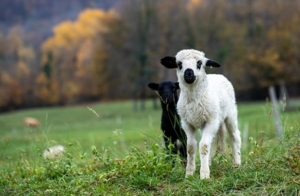Our company often refers to dairy cattle and cattle, including calves. However, we are also closely involved with the sheep and lambs and how we can and can keep these animals healthy.
The youngest life on your farm often comes into contact with pathogens. Most of these have little impact on the lambs due to the antibodies in the milk, but every now and then a pathogen manages to penetrate. This can sometimes cost the youngest member his life. If we look at blue udder, or mastitis in general, the lamb can get too little, sickening or no milk at all, after which the animal will die. In those cases, getting the ewe healthy as quickly as possible is the focus and the lamb must also be fed.
Another discomfort that can have serious consequences for the lamb is diarrhoea. Desiccation and exhaustion can be fatal for the lamb. Rinagro has achieved successes that have enabled the lambs to survive the diarrhoea. After all, a healthy lamb is an active lamb! The dosage below worked in 9 out of 10 cases.
We apply Bio-Optimaal 5 for lamb diarrhoea. The treatment is for 2 to 3 days, administer 10-20 ml orally in a syringe twice a day. If there is no improvement, increase the dose to 20-30 ml. It is important to be and to remain alert with the animals, but always to continue and check the dosage for 2 to 3 days. Lambs that are not fit are crooked, so with a convex back, and they make noise, while a fit lamb first stretches when getting up.
When the lambs are over the diarrhoea, they are often still very limp. For this we have started a trial with the Masecol as an after-treatment. The result of this seems to be positive, but that remains to be seen. To be able to say concretely that it has been a successful experience, it is still too soon.
As soon as we have more news about the effect of Masecol on the flaccidity of the lambs, you will read more about it here. Or feel free to ask one of our colleagues.


